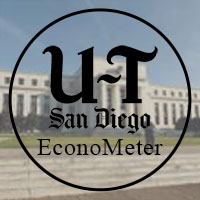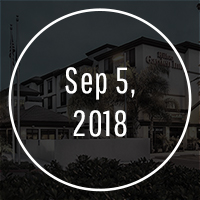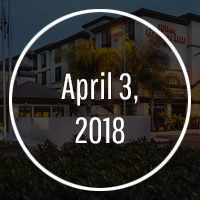Lodging Forecast 2019: Industry Threats Yet Growth
Reading forecast content from the plethora of prognosticators out there can drive one into craziness. Clearly, the current economy has strengths like consumer confidence, employment levels, low oil/gas prices, and purchasing managers sentiments as expressed by the Institute of Supply Management (ISM). Gross Domestic Product (GDP) has been growing at a strong 3 percent +/- rate and most pundits expect a 2-3 percent increase in revenue per available room (RevPAR), largely attributed to average daily rates (ADR).
But there are warning signs—trade, interest rates, stock market turbulence, cost increases, new supply in some markets, global growth slowing, and Airbnb spreading its footprint despite city regulations. Labor is tight and hackers are attacking hotels. Profit margins are being squeezed by the combination of minimum wage increases and low ADR growth. So, is this the end of the 10-year ride, the beginning of the end, or a continuation of good times?
CBRE is forecasting another year of growth, with occupancy levels growing slightly (0.1 percent) and ADR growing by over 2 percent. Bernard Baumohl, chief global economist for The Economic Outlook Group has a less optimistic view and uses the “r” word (recession) and talks about reasons for pessimism, a significant slowdown in 2019 and 2020, and the impact of a trade war caused by President Trump. Baumohl expressed concerns about the investigation into Russian interference in elections, the level of household and government debt as well as tax cuts that did not create a business spending boom. He added that hoteliers would be wise to start preparing for the worst. His remarks at the Lodging Conference a couple of months ago indicated a possible recession coming in the near future.
So, what is a hotelier to do? We believe in -30 percent stress tests. Drop your revenues by 30 percent and see what would happen to the bottom line. Adjust from there when the timing is appropriate—not now. We also believe in contingency plans and whatever one believes about 2019, nobody can be certain! Our forecast projects a GDP growth of 2.4 percent and a similar growth in average rates with flat occupancy levels. Naturally, that varies by market so we put a few markets below that we know well to the test. Do not worry in 2019, enjoy the ride but be prepared! Happy New Year!
San Diego
In the most recent Lodging Econometrics (LE) Construction Pipeline Trend report on San Diego, LE states that San Diego has a total of 37 projects and 8,716 rooms in the construction pipeline. Hotels presently under construction in San Diego are at 12 projects and 1,861 rooms, projects scheduled to start construction in the next 12 months are at 16 projects and 3,211 rooms, and those in early planning are at 9 projects and 3,644 rooms. We do not believe that all of the projects in the pipeline will be built – if they were, it would increase the city’s guest room supply by 13.5 percent.
The three market tracts with the largest hotel construction pipelines according to LE are the San Diego Central Business District with 15 projects and 4,294 rooms; the south and east portions of San Diego with 8 projects and 2,574 rooms; and Carlsbad and Oceanside with 7 projects and 1,058 rooms. These three market tracts combined account for 81 percent of San Diego’s total construction pipeline.
We expect San Diego to grow slowly over the next few years, with no more than 3 percent per annum supply growth. Occupancy levels should remain close to 78 percent at over $170 in 2019, up 3 percent in ADR. Through November, San Diego’s RevPAR is up 5 percent.
Los Angeles
The LA market area should see ADR growth of 2.5 percent, approaching $185 with occupancy levels down to just under 80 percent. Through November, LA has seen a RevPAR growth of only 1.9 percent. This is due to the large increase in supply, up 3.3 percent in 2018 and headed up from there, which is well beyond most major U.S. markets. Los Angeles has 59 projects with 8,334 rooms scheduled to hit by 2020. The big boom is from downtown and if all works out, LA will improve its posture in the regional and national convention market.
Phoenix
The Phoenix Metropolitan market should see 68 percent occupancy and $130 as 2018 comes to a close, up over 3 percent in occupancy and over 2 percent in ADR. The RevPAR growth of 5.4 percent is one of the best for cities in the western U.S. New supply is up 2.6 percent in 2018 with a fairly robust pipeline. According to Visit Phoenix, there are 17 hotels and 2,240 rooms opening this year. LE states there are 29 properties in final planning representing 3,250 rooms. The supply should be absorbed by new demand, leaving occupancy levels flat in 2019. ADR should increase 2.5 percent to $133.







